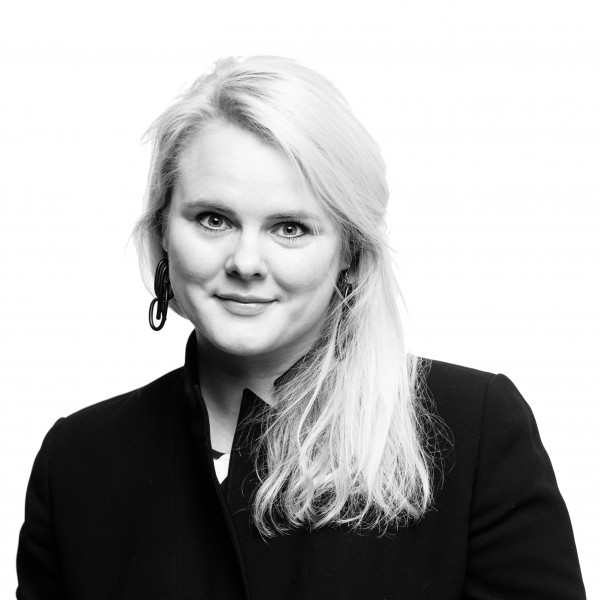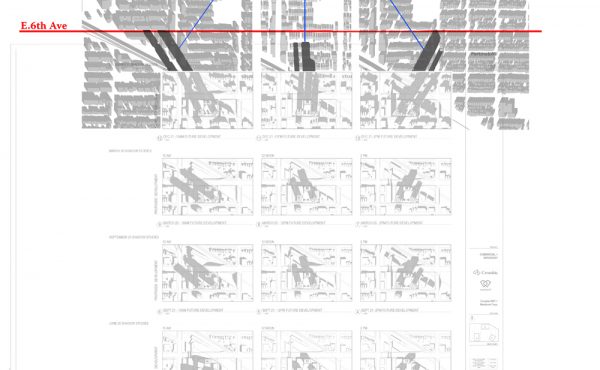
Johanna Hurme is an architect and founding partner of Winnipeg-based 5468796 Architecture. Immigrating from Finland in the mid 90’s and, subsequently graduating of the Masters of Architecture degree at the University of Manitoba, she worked for several years in Winnipeg prior to establishing 5468796 Architecture with Sasa Radulovic in 2007. Working around a single table, the twelve members of 5468796 believe that every client, user and civic environment – regardless of budget – deserves an outcome that advances architecture.
Spacing Vancouver’s Alicia Medina had the wonderful opportunity to chat to Johanna about her work and perspectives on design, prior to her visit on March 4th where she will be speaking at an event hosted by Women in Architecture (tickets here).
Spacing: Hi Johanna, thank you for taking the time to chat with us. As a principal of 5468796 Architecture, can you tell us about your approach to running small-scale architecture studio?
Hurme: Running a small-scale studio allows us to be nimble, benefit from the talent of everyone around our table and rely on the power of the collective. Architecture is a profession of optimism. Together, we believe that there are no great project briefs, but rather, one has to discover the potential within each project and budget in order to take it beyond simply meeting a baseline. Often what seems to be our greatest challenge (like practicing architecture in Winnipeg ten years ago) becomes our greatest opportunity. Our first 5-6 years of practice seem to have been reactionary to our context. Now, we are trying to take a more proactive approach and really evaluate the direction we want our work to go in the future – this is a topic that occupies my thoughts on a continuous basis.
Spacing: Your studio is often described as a collaborative space with a non-hierarchical structure, where everyone works along a communal table. How does this affect both the design process and the management style of the studio?
Hurme: We are a tight knit group and believe that complete transparency to the office operations is key, in order to extract the maximum benefit from our collective brain power. This applies to design, technical knowledge, construction administration as well as running our business. We share all financial information with the entire crew and, in return, expect input, feedback, suggestions and ideas on how to collectively become better within all areas of practice, from everyone at the table. We have also implemented a self-generating incentive program that allows us to share profits together, if a collectively agreed upon baseline profit is achieved. All of this requires – and is based on – a culture of trust and accountability, across the board.
Similarly, we believe that design approaches and decisions must always be discussed, generated and critiqued in a group setting, with several heads around the table. We are so used to working in this fashion that, at this point, it would be unnatural for any one of us to design on our own. Often times, the discussions are heated and we tend to not only talk our way through problems, but fight through them. In this process, the result can never be a compromise, but rather must settle on the best possible outcome, regardless of who the idea might originate from.
Spacing: What is keeping 5468796 Architecture busy these days? What types of new projects and initiatives are lining up for 2015?
Hurme: Generally speaking, the majority of our work tends to be in multi-family housing and we continue to work in this typology. In addition, we are currently involved in projects that are more public in nature, as well as a couple of very exciting experimental research projects that really add to our collective knowledge base. Unfortunately, I cannot be more specific at this time. We currently have projects across the country in seven cities, and are quite excited to test our skills and approach in these different contexts.
Spacing: Here in Vancouver we have a strong real estate development industry working in mixed-used and multi-family projects. From your experience working on various medium and high-density projects in Winnipeg, how do you balance market/budget constraints with high quality design?
Hurme: I do think that the Canadian public is becoming more and more design savvy and we are sensing a shift toward a willingness to invest in better quality (as opposed to quantity or always desiring the cheapest option). There is a case to be made for the value that considered design provides for all of us, and that we as architects have a civic responsibility to provide high quality, sustainable solutions that do not become disposable in a few years. Having said this, I also recognize that working in the context of Winnipeg – a typical mid-western city that suffers from sprawl and a neglected downtown core due to cheap land values – is quite different from Vancouver, Toronto or New York, where the biggest issue in housing is affordability and equality.
We believe that being acutely aware of construction costs and using innovation – whether it be through design, the use of custom components, or unusual project delivery methods – allows us to allocate resources where we need them most, on any given project. The majority of our work thus far has been for the private development industry and, through these experiences, we have learned that first and foremost we have to deliver on the numbers and create return for our client’s investments (otherwise we wouldn’t have a job). This is a given, and only when this criteria is met can we begin to advance architecture. Ideally, the architectural innovation, itself, creates profit and improves our client’s bottom line. We believe that design should never depend on appliqué or frivolous elements, but rather be an essential and robust part of the solution. With this method, we do not risk the project’s essence being cut through value engineering along the way.
Spacing: At Spacing Magazine, we explore a wide variety of topics through the lens of urbanism. In your projects, how do you address the integration/interaction of the architectural object with its physical, social and cultural context?
Hurme: Fundamental to our thinking is the belief that each of our buildings is part of the city. While we have a responsibility to meet the needs of our clients, the end users of the spaces and places we design, we also recognize that we have a broader responsibility to our context, and that we create building blocks for the city we operate in. We also believe that the success of any multi-family housing project is contingent upon the quality of its shared public outdoor spaces and that, ultimately, towers do not lend themselves as readily to creating communities. You can see this theme throughout or built work – shared outdoor spaces are part of nearly every project we have undertaken and we believe this is where friendships are forged – where kids play and where neighbours exchange stories. A network of these places, superimposed over a network of streets and civic spaces, is what makes a great city.
Spacing: 5468796 Architecture is also known for its involvement in design advocacy (Migrating Landscapes, Table for Twelve, etc.). Why is this important for you and how does this overlap with your design practice?
Hurme: Today, an architect’s scope of work stretches wide and deep. We need to become activists. Research and advocacy help us propel our profession forward and, in turn, creates better and more interesting cities and places for all of us to live in. We do think that when properly harnessed, the creative industries have enormous potential, the majority of which is still untapped. I do believe we live in a DESIGN ECONOMY and that it is our responsibility as architects to further the cause of design, so that this potential can be fully realized. The research initiatives you mentioned have allowed us to position our work in the context of the current architectural paradigm. We are constantly seeking meaning in our work and trying to ensure that what we do is relevant to the world.
Spacing: You are speaking in Vancouver on March 4th at an event hosted by Women in Architecture. What is your advise for other women thinking of entering the field and/or at the beginning of their careers who aspire to be a principal of a firm?
Hurme: Ideology aside, every indicator out there suggests that the more women (and general equality) we have in any profession or business, the better that entity does financially. That is a fact. Smart companies and employers are seeing this and reacting – we now have more and more women in top positions of government, the business sector and in education, why would we not then aim to have the same diversity in our profession?
My advice to colleagues and young women out there would be to proceed with confidence. Sadly, this seems to matter even more than competence – http://theconfidencecode.com. One of the more interesting findings in Confidence Code by Katy Kay and Claire Shipman is that “men are likely to apply for a position when they have 60% of the qualifications, women will only apply when they feel they have 100% or more of the requested qualifications” – in turn leading to men advancing to power positions more quickly. In other words, aside from attitudes in construction, business and technical fields that are slow to change, it does seem that half of the battle of what is holding women back is unnecessary self-doubt.
The profession is rich with opportunities, and women across the world have much to offer. Go for it, and go far.
***
For more information on the Women in Architecture, visit their website. Tickets for the upcoming event featuring Johanna Hurme can be attained through Eventbrite here. It is a free event sponsored by the University of British Columbia School of Architecture and Landscape Architecture, British Columbia Chapter of Royal Architectural Institute of Canada, DIALOG, and Symmetry Lighting.
**
Alicia Medina Laddaga is an architecture and urban designer/researcher based in Vancouver. Originally from Mexico where she studied and practiced architecture, she moved to Vancouver in 2011 to pursue a Masters of Advanced Studies in Architecture at UBC. While trying to bridge the gap between two cultures (Mexico and Canada), Alicia keeps on developing her ideas about the ways in which dynamic and spontaneous processes transform cities into vibrant urban environments.




